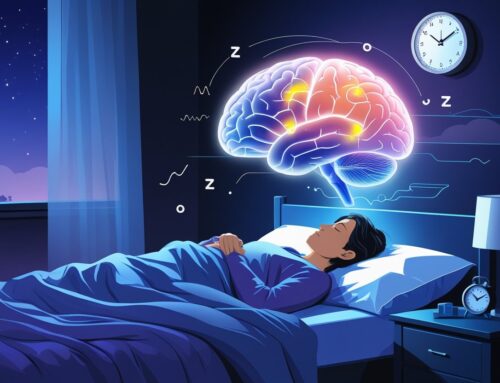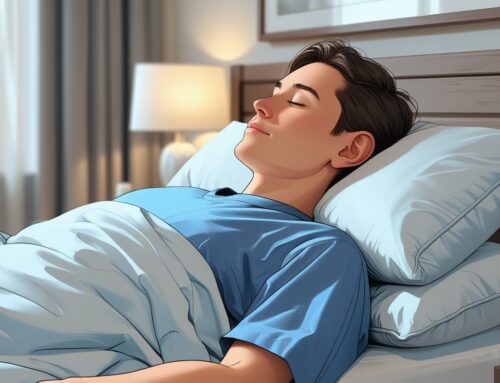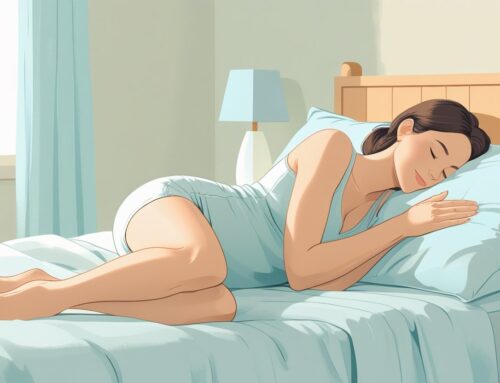Waking up early after a night of little or no sleep can feel overwhelming. If you can’t sleep within 20 minutes, it’s best to get out of bed and do something calming to relax the mind, then try again later. This prevents frustration and makes it easier to fall asleep upon returning to bed.
Preparing for the morning ahead helps reduce stress when sleep falls short. Simple habits such as laying out clothes or setting breakfast in advance lower morning pressure and increase the chance of restful sleep. Focusing on comfort, limiting bright screens, and avoiding stress at night all support faster rest.
Knowing what to do right away and adjusting the environment can help those dealing with early wake-ups after poor sleep. These practices equip people to handle sleepless nights with less tension and better outcomes.
Key Takeaways
- Taking a short break from trying to fall asleep eases stress and leads to better rest.
- Getting ready for the following day reduces morning anxiety.
- A calm environment encourages quicker sleep.
- The right mattress supports spinal alignment, relieves pressure, and regulates temperature, improving sleep quality and helping you wake up rested, even after early mornings.


Many people struggle to fall asleep or stay asleep before an early morning. This may result from both external factors and internal body rhythms. Identifying these causes allows for a more effective approach to resolving sleep issues.
Common Sleep Disruptors
Several daily factors can interfere with sleep. Noise, bright lights, or an uncomfortable bed may prevent someone from falling asleep. Stress or anxiety about waking up early can also cause the mind to race, making it difficult to unwind.
Certain habits, such as using phones or computers right before bed, interfere with sleep as well. These devices emit blue light, which signals the brain to stay alert instead of preparing for rest. Excess caffeine or alcohol consumed later in the day can also throw off sleep cycles.
A quiet, dark, and cool room, combined with reduced screen time and fewer stimulants in the evening, minimizes these disruptions.
The Science of Sleep Cycles
Sleep follows a pattern that cycles through light sleep, deep sleep, and REM sleep. Each cycle runs about 90 minutes. When these cycles break, the result may be grogginess or difficulty falling back asleep.
Biological clocks, known as circadian rhythms, influence the natural urge to sleep or stay awake. If someone needs to wake up early but their internal clock remains alert, falling asleep becomes a challenge. This mismatch between body rhythm and schedule is a common cause of poor sleep.
Aligning sleep patterns with these natural cycles leads to quicker sleep onset and more restful sleep.
Recognizing Insomnia Symptoms
Insomnia goes beyond the occasional rough night. It involves frequent trouble falling asleep, waking too early, or lying in bed exhausted but unable to sleep. In many cases, it persists for weeks or even longer. Symptoms may include repeated sleep interruptions or ongoing fatigue despite time in bed. Insomnia often connects to stress, anxiety, depression, or medical conditions.
Early recognition and intervention help prevent short-term sleep issues from becoming chronic. Some situations call for lifestyle changes, while others might require professional treatment to restore proper sleep.
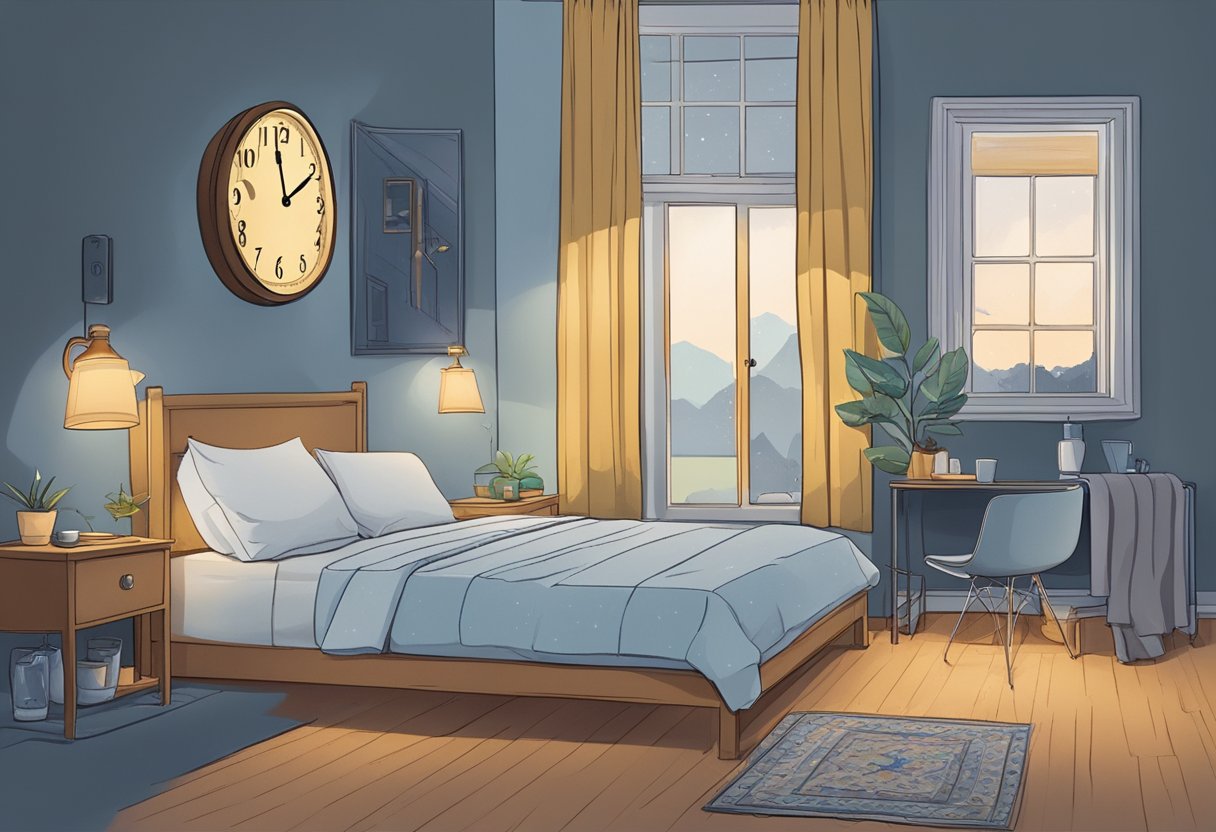
When someone can’t sleep but needs to get up early, staying calm and using techniques to relax the body and mind is essential. Even if sleep doesn’t come quickly, small actions can reduce stress and help prepare the body for the day ahead.
What to Do When You Can’t Fall Asleep
If falling asleep is difficult, stop forcing it. Lying awake in bed for hours can increase tension. Instead, get up and engage in a quiet, relaxing activity, such as reading or listening to soft music. Avoid screens, as blue light interferes with melatonin, the sleep hormone.
Focus on slow, deep breathing or gentle stretching. These methods ease physical tightness and calm racing thoughts. Visualizing a peaceful place or counting breaths can help distract the mind from worries. Keeping the room cool and dark also signals the body to rest. Avoid caffeine or heavy meals before trying to sleep again.
Staying Calm and Reducing Frustration
Stress about not sleeping makes it harder to rest. Accepting the situation can help. Instead of worrying, remind yourself that you can still function the next day with limited sleep. Practice mindfulness or meditation to stay present and lower anxiety. If frustration builds, try writing down your thoughts to clear your mind. Avoid constantly checking the clock, as it only adds pressure.
Soothing sounds or white noise can mask distractions and create a calming environment. Staying calm reduces muscle tension and helps the body relax naturally.
How to Set Yourself Up for Rest, Even Without Sleep
If sleep doesn’t come, rest still helps. Lie quietly with your eyes closed, focusing on relaxing each part of your body, from your toes to your head. This can lower your heart rate and promote recovery. Prepare for the morning by setting alarms and planning your clothes or meals. This reduces stress and helps the brain rest more easily.
Gentle stretches or light yoga before bed can reduce stiffness and prepare the body for rest. A small glass of water or caffeine-free herbal tea may also help soothe your nerves. These steps increase the chances of rest, even when falling asleep isn’t possible. For more natural ways to improve sleep, check methods to fall asleep quickly.

When someone needs to fall asleep quickly, focusing on targeted methods helps calm both the mind and body. These approaches reduce physical tension and control breathing to quiet a restless mind.
Proven Relaxation Methods
Relaxation techniques can lower stress and prepare the body for sleep. Progressive muscle relaxation is one effective method. It involves tensing and then relaxing each muscle group from head to toe. This process eases physical tightness and signals the brain to enter a restful state.
Another useful strategy is guided imagery. Visualizing a peaceful scene, like a quiet beach or a calm forest, shifts attention away from worries. This mental escape reduces racing thoughts and makes it easier to fall asleep.
Adjusting the environment also supports relaxation. Lowering room temperature and limiting noise create better conditions for sleep. These actions combine to help those struggling with insomnia or wondering how to sleep when they can’t.
Breathing and Mindfulness Exercises
Simple breathing exercises quickly calm the nervous system. The 4-7-8 breathing method is well-known. It involves breathing in for 4 seconds, holding the breath for 7 seconds, and then exhaling slowly for 8 seconds. Repeating this cycle slows the heart rate and relaxes the body.
Mindfulness meditation also helps by encouraging focus on the present moment. When thoughts about sleep or stress arise, the person gently brings attention back to their breath. This prevents frustration and reduces the racing thoughts common in insomnia.
Both breathing and mindfulness exercises serve as practical tools for those asking how to fall asleep when they can’t, or how to cure insomnia in minutes. Regular practice improves sleep quality over time and provides immediate relief on tough nights.
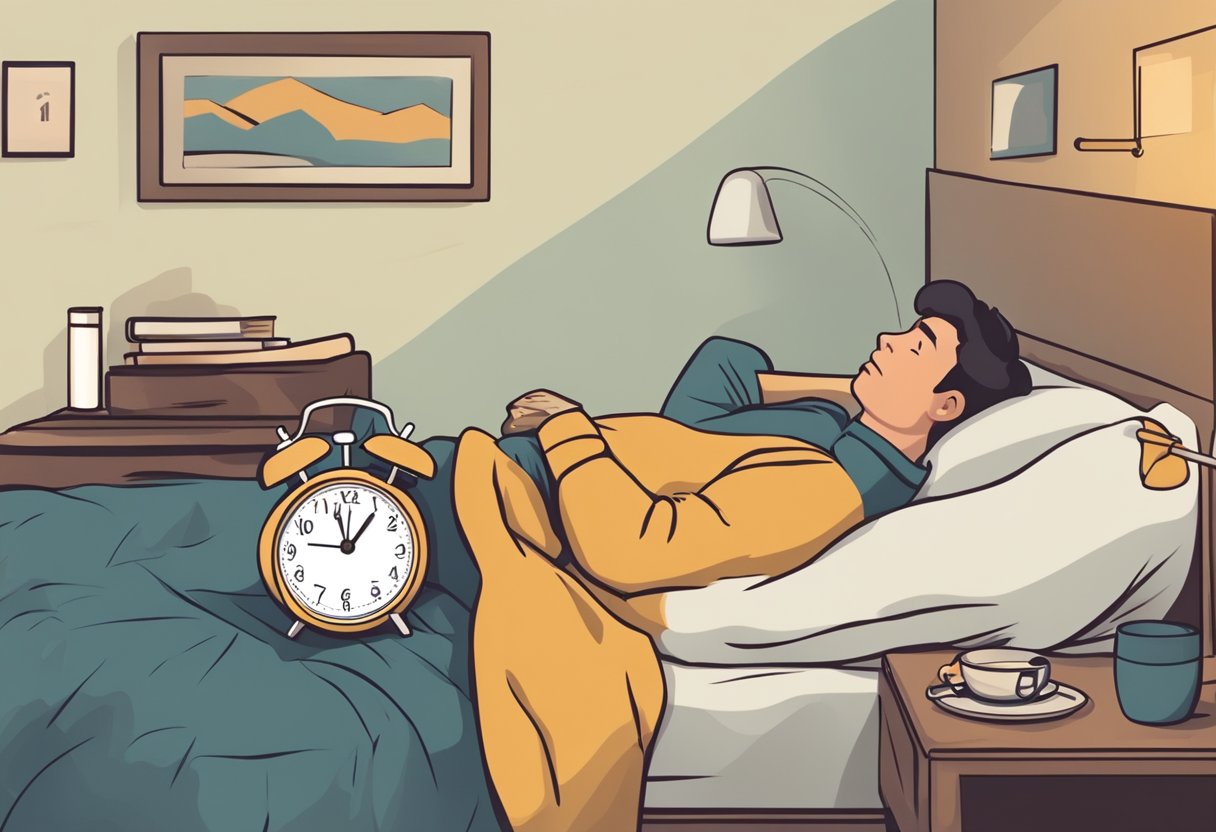
When struggling to sleep before an early wake-up, certain habits and choices can make the problem worse. Avoiding them can improve your chances of falling asleep and staying rested.
Bad Sleep Habits to Break
Napping during the day, especially in the late afternoon or evening, reduces the need for sleep at night. This can make it harder to fall asleep when needed. Sleeping in or going to bed much earlier than usual also disrupts the body’s natural schedule.
Waking in the middle of the night and staying in bed for a long time can train the brain to associate the bed with frustration instead of rest. If unable to sleep, it’s better to get up and do a calm, non-stimulating activity until you feel sleepy again.
Inconsistent sleep schedules confuse the internal body clock. Going to bed and waking up at the same time every day helps improve sleep quality. Skipping this can worsen insomnia.
Food, Drink, and Technology Pitfalls
Consuming caffeine-containing drinks such as coffee, tea, and energy drinks several hours before bedtime prevents sleep because caffeine is a stimulant. Eating heavy meals late at night can cause discomfort and interfere with sleep.
Using phones, tablets, or computers before bed exposes your eyes to blue light. This light blocks melatonin, the hormone that signals sleep. Instead of scrolling or watching screens, try using audio sleep aids designed to help you relax.
Alcohol may seem to help you fall asleep but often leads to fragmented and less restful sleep later in the night. Drinking excess water close to bedtime can cause disruptive bathroom trips.

When someone struggles to fall asleep despite needing rest, adjusting both physical surroundings and mental state can help. Small changes to the bedroom and specific mental methods reduce restlessness, making it easier to fall asleep.
Optimizing Your Sleep Space
A calm, comfortable environment is crucial for falling asleep when the body resists rest. The room should be dark, quiet, and cool—around 65°F (18°C) is ideal. Blackout curtains and earplugs block outside noise and light, which often disrupt sleep. The bed must be inviting. Removing clutter and keeping only sleep-related items helps the brain associate the space with rest. Avoiding screens or bright lights an hour before bed also strengthens this link.
Adjusting the environment during wakeful moments at night can prevent frustration. For example, if unable to sleep after 20 minutes, getting out of bed and doing a quiet, low-light activity for a short time resets the mind without fully waking it.
Mental Techniques to Quiet Restlessness
When the mind won’t calm down, focused mental strategies can improve the chances of sleep. One effective method is progressive muscle relaxation, tensing and relaxing body parts sequentially.
Another approach is telling oneself, “If I can’t sleep, I will at least rest my body.” This mindset reduces pressure and calms racing thoughts. Visualization of a peaceful place or slow, deep breathing can also shift the brain away from anxious or alert states.
Avoiding clock-watching or stressing about not sleeping prevents further restlessness. Instead, emptying the mind by gently pushing away active thoughts directs focus away from sleep problems toward relaxation.
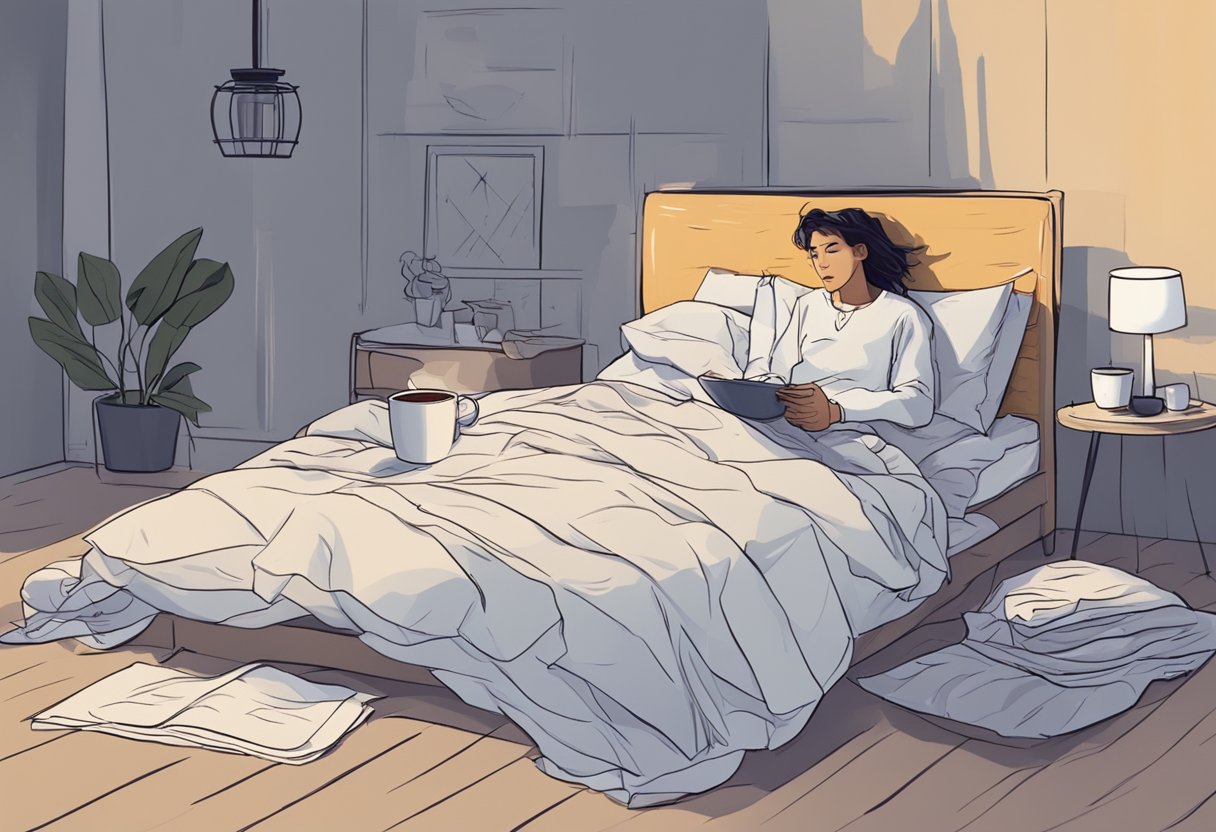
When someone wakes up early after little or no sleep, managing tiredness and staying alert is crucial to getting through the day. Simple steps can reduce fatigue and improve focus. Adjusting the morning routine and using short-term strategies help maintain energy until rest is possible.
Coping with Fatigue When You Must Wake Up Early
Fatigue after poor sleep can be intense, but certain actions can help manage it effectively. Drinking moderate amounts of caffeine, such as up to two cups of coffee, can boost alertness without causing a crash later. It is important to avoid excessive caffeine, as it can worsen restlessness the following night.
Exposure to natural sunlight early in the day signals the brain to increase alertness. Spending at least 20 minutes outside or sitting near a bright window can improve mood and mental function. Light helps regulate the body’s internal clock, which can be helpful when struggling with insomnia or difficulty staying asleep through the night.
Quick Tips to Stay Alert During the Day
To stay awake and focused, take movement breaks every hour. Simple activities like short walks or stretching increase blood flow and reduce drowsiness.
Eating small, balanced meals with protein and complex carbs keeps energy steady. Avoid heavy or sugary foods that can cause energy dips. Hydration is also key; drinking enough water helps prevent tiredness.
If possible, a brief nap of 15 to 20 minutes early in the afternoon can restore focus without interfering with nighttime sleep. Avoid longer naps, as they might worsen the problem of not being able to sleep at night.
Regular aerobic exercise, such as walking or swimming, supports better sleep patterns for more restful nights.
Sometimes, trouble sleeping is more than a one-time issue. Recognizing when to consult a doctor can prevent long-term problems and help find the right treatment.
Recognizing the Signs of Chronic Insomnia
Chronic insomnia refers to difficulty falling or staying asleep at least three nights a week for three months or longer. It often leads to daytime issues like fatigue, mood swings, or trouble focusing. Waking up too early and being unable to fall back asleep regularly may also indicate chronic insomnia.
Other symptoms to watch for include relying on caffeine to stay awake, feeling anxious about sleep, or experiencing poor memory. If these problems persist or worsen, it is crucial to consult a healthcare provider. They may recommend adjustments to your sleep routine or suggest treatment options.
When Sleepless Nights Indicate an Underlying Issue
Difficulty sleeping can sometimes point to other health problems. Conditions such as depression, anxiety, pain, or sleep apnea can lead to frequent nighttime wake-ups or poor sleep quality. If insomnia occurs along with symptoms like snoring, chest pain, or mood changes, a medical evaluation is necessary.
A doctor may order tests or refer you to a sleep specialist to determine the cause. A proper diagnosis is vital if basic insomnia tips don’t provide relief. Seeking help early can improve sleep and overall health, especially if sleep issues interfere with daily activities or safety, such as drowsiness at work or while driving.
Improving sleep over time requires building strong habits and making changes to daily life. These efforts can enhance the ability to fall asleep and stay asleep, even when waking early.
Establishing a Consistent Routine
A stable sleep schedule helps regulate the body’s internal clock. Going to bed and waking up at the same times each day, including weekends, trains the brain to feel sleepy and alert at regular intervals.
A relaxing pre-sleep routine can also be beneficial. Activities like reading a book or listening to calm music signal the body to wind down. Avoiding screens and bright lights for at least 30 minutes before bed helps prepare the body for sleep. Creating a quiet, dark, and cool bedroom environment encourages better sleep. Eliminating distractions and noise reduces awakenings during the night.
Lifestyle Changes That Improve Sleep Quality
Regular aerobic exercise promotes falling asleep more easily and increases deep sleep. Activities such as walking, jogging, or swimming should be done earlier in the day, as exercise too close to bedtime can cause alertness.
Limit caffeine and nicotine, particularly in the afternoon and evening. These stimulants interfere with the ability to fall asleep and stay asleep. Avoid heavy meals or alcohol right before bed, as they can disrupt sleep cycles.
Managing stress is essential. Techniques like progressive muscle relaxation or gentle stretching before bed can calm both mind and body. Drinking caffeine-free herbal tea or taking a warm shower also supports relaxation.
A mattress affects how well someone sleeps. It influences comfort, spinal alignment, and pressure relief. Choosing the right mattress reduces discomfort and helps prevent waking up in pain.
Experts recommend a medium-firm mattress because it balances softness and support, which keeps the spine in a natural position. Research shows that this type of mattress can improve sleep quality by more than half and may reduce back pain.
The right mattress also supports better temperature regulation. Materials that promote airflow help keep the sleeper cool, which prevents overheating during the night and reduces tossing and turning.
Here are some mattress features to consider:
- Support: Keeps the spine aligned.
- Comfort: Soft enough to relieve pressure points.
- Temperature control: Breathable materials reduce heat.
- Durability: Maintains shape over time for consistent support.
The Puffy Cloud Mattress helps you fall asleep quickly, stay asleep all night, and wake up well-rested, even when you have to wake up early. This 10-inch all-foam mattress is medium-firm, so it is a great fit for side and back sleepers who need comfort and support.
Here are some mattress features to consider:
- Cloud Comfort Foam contours to your body and eases pressure on your back, which helps you fall asleep without tossing around.
- Firm Core Support Foam stabilizes your body and keeps your spine aligned, so you wake up without aches.
- Cool Touch Cloud Cover feels refreshingly cool the moment you lie down, due to breathable fabric that doesn’t trap heat.
- Cooling Cloud Foam draws heat away from your body and helps the mattress stay cool all night.
The breathable and stain-resistant cover adds to the comfort. The latest model also removes fiberglass, which makes it a safer choice for your home.
A poor mattress often leads to restlessness and discomfort. Upgrading to one that meets these standards may improve both sleep length and quality. For more details on choosing a mattress, visit this helpful guide.
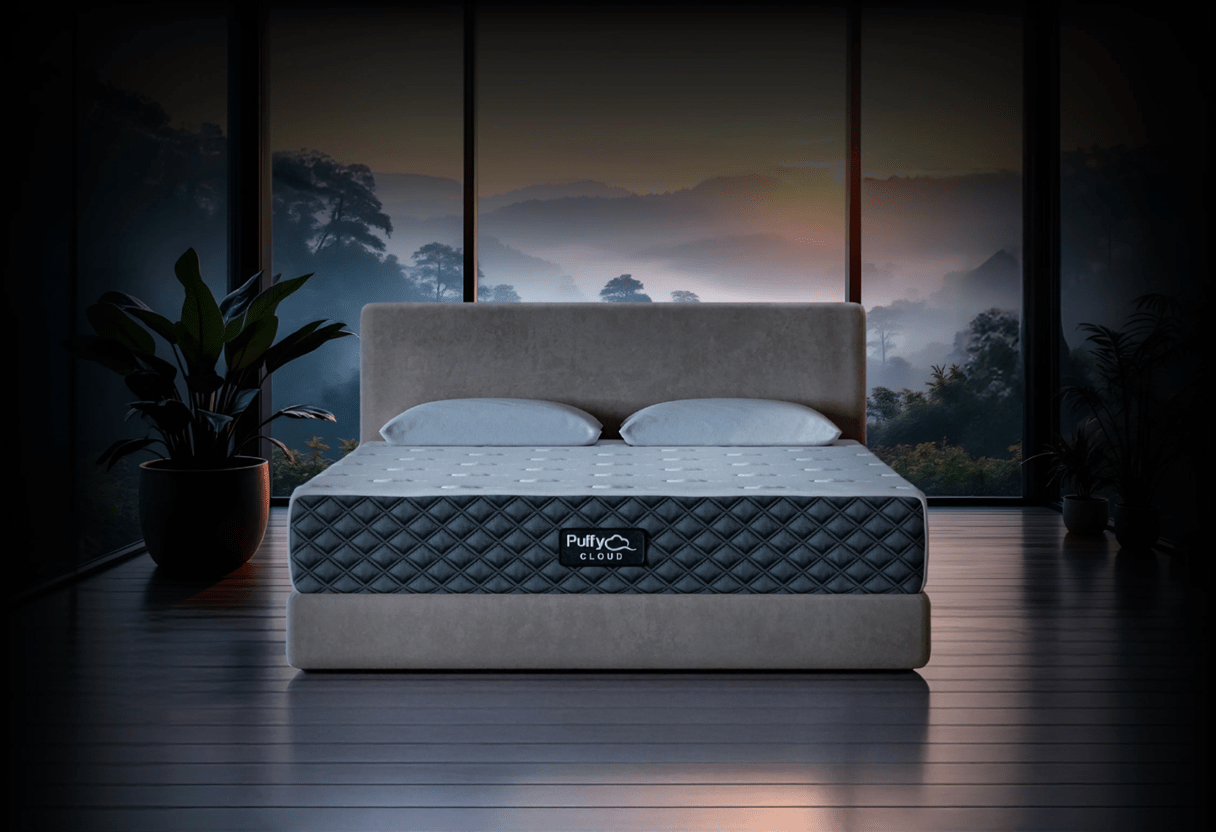
Frequently Asked Questions
Good sleep habits, calming activities, and knowing how to respond to wake-ups during the night are essential. Managing the time spent awake in bed and adjusting routines can also help those who need to wake up early.

